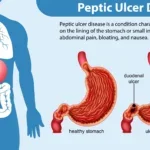I. Introduction
Tocolytic agents are medications used to inhibit uterine contractions and suppress premature labor, thereby prolonging pregnancy long enough for vital fetal benefits—particularly the administration of antenatal corticosteroids and safe transfer to an appropriate facility. Modern practice focuses on maximizing neonatal outcomes while minimizing maternal and fetal risks, as no tocolytic is conclusively shown to improve long-term fetal prognosis, but effective short-term delay can be lifesaving.
II. Clinical Rationale and Indications
- Primary goal: Delay preterm birth (usually by 48 hours–7 days) to:
- Facilitate fetal lung maturity (via antenatal steroids)
- Allow in-utero transfer to tertiary care
- Provide time for magnesium sulfate (for neuroprotection if <32 weeks gestation)
- Indications: Threatened preterm labor (20–34 weeks gestation, cervical change, regular contractions)
- Contraindications: Intrauterine infection/chorioamnionitis, fetal demise/distress/anomaly incompatible with life, severe preeclampsia/eclampsia, significant vaginal bleeding.
III. Classes, Mechanisms, and Key Agents
| Class | Prototype(s) | Mechanism | Gestational Limit | Maternal Precautions | Fetal Precautions |
|---|---|---|---|---|---|
| Beta-adrenergic agonists | Terbutaline | Stimulate β2 receptors → ↑cAMP → ↓intracellular Ca²⁺ → uterine relaxation | Up to 32 weeks | Tachycardia, hypotension, hyperglycemia, pulmonary edema | Tachycardia, hypoglycemia |
| Calcium channel blockers | Nifedipine | Block L-type Ca²⁺ channels → impaired smooth muscle contraction | Up to 34 weeks | Hypotension, headache, flushing | Rare—fetal hypoxia |
| NSAIDs (Prostaglandin inhibitors) | Indomethacin | Inhibit COX → ↓prostaglandin synthesis → inhibit uterotonics | <32 weeks | GI upset, platelet dysfunction | Oligohydramnios, premature ductus arteriosus closure |
| Magnesium sulfate | MgSO₄ | Competes with Ca²⁺, blocks Ca²⁺ entry at myocyte membrane | <32 weeks (neuroprotection); limited tocolysis | Flushing, hypotension, toxicity | Hypotonia, hypermagnesemia |
| Oxytocin receptor antagonists | Atosiban | Blocks oxytocin receptors → blocks myometrial contractions | Not available in US (Europe) | Nausea, headache, rarer side effects | Generally well tolerated |
| Nitric oxide donors | Nitroglycerin | Promote smooth muscle relaxation via NO/cGMP pathway | Not routinely used | Hypotension, headache, tachycardia | Limited data |
A. Beta-adrenergic Receptor Agonists
- Mechanism: β2-adrenergic stimulation increases myometrial cAMP, reducing intracellular Ca²⁺ and muscle contractility.
- Pharmacokinetics: IV, SC, or oral administration; rapid onset.
- Limitation: Serious cardiovascular and metabolic maternal/fetal side effects. Not recommended for chronic use (>48–72h).
B. Calcium Channel Blockers
- Mechanism: Nifedipine inhibits extracellular Ca²⁺ entry into smooth muscle cells, impeding actin-myosin interaction and contraction.
- Advantages: Oral use, cost-effective, relatively fewer serious adverse effects.
- Limitation: Must avoid in women with significant hypotension or cardiac compromise.
C. NSAIDs (Indomethacin)
- Mechanism: Blocks prostaglandin synthesis, delaying cervical ripening and uterine activity.
- Limitation: Can cause premature ductus arteriosus closure and oligohydramnios if prolonged or after 32 weeks gestation.
- Typical use: Short courses in early preterm labor.
D. Magnesium Sulfate
- Mechanism: Competitively inhibits calcium entry and polypeptide release at neuromuscular junction.
- Dual use: Tocolytic effect is modest; key modern use is for fetal neuroprotection (prevention of cerebral palsy if delivered <32 weeks).
- Adverse effects: Risk of toxicity; require monitoring for loss of reflexes, respiratory depression, cardiac arrest.
E. Oxytocin Receptor Antagonists (Atosiban)
- Mechanism: Direct, competitive antagonist at oxytocin receptors on uterine smooth muscle.
- Regional Use: Widely used in Europe, not approved in the US; minimal maternal and fetal side effects.
IV. Efficacy and Limitations
- Efficacy: No tocolytic agent improves neonatal long-term morbidity/mortality compared to placebo but all can delay delivery 48 hours—a window critical for corticosteroids and transfer.
- Head-to-head: Nifedipine is at least comparable to β2-agonists but with fewer adverse effects; indomethacin is most effective before 32 weeks but must be discontinued early.
- Combination therapy: Not routinely recommended outside research—no clear additive benefit, increased risk of adverse outcomes (Ref: Cochrane review CD006169).
V. Adverse Effects and Monitoring
| Agent | Maternal Risk | Fetal/Neonatal Risk | Monitoring Essentials |
|---|---|---|---|
| Terbutaline | Tachycardia, palpitations, arrhythmia, pulmonary edema | Hypoglycemia, tachycardia | Pulse, ECG, BP, glucose |
| Nifedipine | Hypotension, headache | Minimal (rare fetal hypoxia) | BP, signs of hypotension |
| Indomethacin | Nausea, GI bleed | Oligohydramnios, ductal closure | Renal US, ductal flow |
| Magnesium | Flushing, weak reflex, respiratory/cardiac arrest (OD) | Hypotonia, respiratory depression | Reflexes, respiration, Mg levels |
| Atosiban | Minimal, well tolerated | Minimal effects | Clinical observation |
VI. Special Considerations
- Magnesium sulfate is the only agent proven to reduce the incidence/severity of cerebral palsy when given to women <32 weeks at imminent risk of delivery.
- Antenatal corticosteroids (betamethasone or dexamethasone) should always be given when tocolytics are started (if <34–36 weeks).
- Contraindications for ALL tocolytics: Intrauterine infection, placental abruption, fetal demise, or situations where pregnancy prolongation poses risk to mother/fetus.
VII. Current Guidelines and Practice Recommendations
- First-line choices: Nifedipine or indomethacin (if <32 weeks, short course), as favored by ACOG, RCOG, and WHO recommendations.
- Beta-agonists and magnesium sulfate—reserved for cases where CCBs/NSAIDs are contraindicated.
- Atosiban—preferred in Europe when available due to excellent safety profile.
- Always co-administer antenatal corticosteroids, consider magnesium sulfate <32 weeks for neuroprotection, and transfer to tertiary center if possible.
VIII. Emerging Research and Future Directions
- Novel agents: Research examining nitric oxide donors, prostaglandin receptor antagonists, and gene therapy for targeted myometrial suppression.
- Biomarkers: Work is underway to personalize tocolytic selection and duration based on individual risk assessment (e.g., cervical length, fetal fibronectin).
IX. Summary Table
| Tocolytic Class | Use Setting | Maternal Risks | Fetal Risks | Main Advantage |
|---|---|---|---|---|
| CCB (Nifedipine) | 24–34 weeks, 1st line | Hypotension, headache | None significant | Oral, safe, widely available |
| NSAID (Indomethacin) | <32 weeks, short-term | GI, liver, bleeding | Ductal closure, oligohydramnios | Powerful, rapid, cost-effective |
| Beta-agonist | Alternative or 2nd line | Cardiac, metabolic | Tachycardia, hypoglycemia | Potent, quick response |
| MgSO₄ | Neuroprotection (<32wk) | Toxicity if unmonitored | Hypotonia | CP prevention, low cost |
| Atosiban | (Europe/Asia) | Minimal | Minimal | Safety, well-tolerated |
X. References
- Goodman & Gilman’s The Pharmacological Basis of Therapeutics, 13th Edition.
- Williams Obstetrics, 25th Edition.
- National Center for Biotechnology Information. Bookshelf: Tocolytic Therapy for Preterm Delivery.
- Cochrane Database Syst Rev. 2014;CD006169 (Combination therapy).
- ACOG Practice Bulletin: Management of Preterm Labor (No. 234, 2021).
- NICE Guideline NG25: Preterm Labour and Birth (UK).
- Drugs.com, FDA, WHO guidelines.
This authoritative, updated overview covers foundational knowledge, clinical applications, guideline recommendations, and safety/monitoring for all major tocolytic agents, suitable for advanced medical education and clinical reference.
📚 AI Pharma Quiz Generator
🎉 Quiz Results
Medical Disclaimer
The medical information on this post is for general educational purposes only and is provided by Pharmacology Mentor. While we strive to keep content current and accurate, Pharmacology Mentor makes no representations or warranties, express or implied, regarding the completeness, accuracy, reliability, suitability, or availability of the post, the website, or any information, products, services, or related graphics for any purpose. This content is not a substitute for professional medical advice, diagnosis, or treatment; always seek the advice of your physician or other qualified health provider with any questions you may have regarding a medical condition and never disregard or delay seeking professional advice because of something you have read here. Reliance on any information provided is solely at your own risk.









